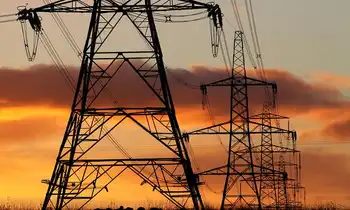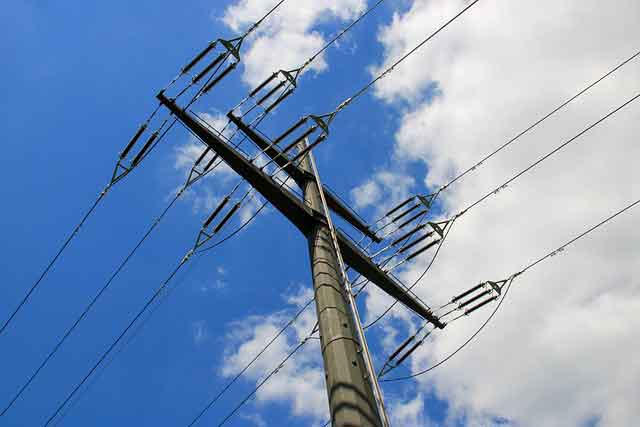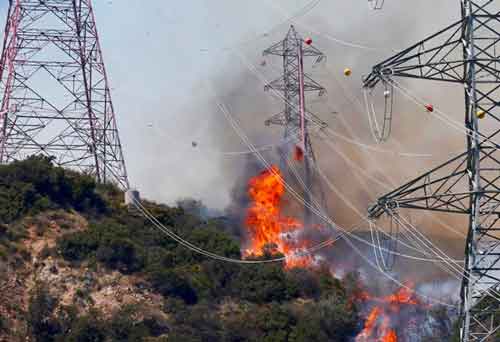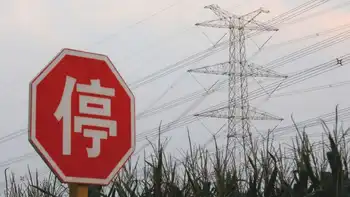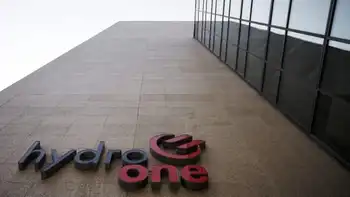Government lab tests 'super' power cables
By Associated Press
CSA Z463 Electrical Maintenance
Our customized live online or in‑person group training can be delivered to your staff at your location.

- Live Online
- 6 hours Instructor-led
- Group Training Available
Now undergoing final tests at the Oak Ridge National Laboratory, the superconductor cable to be installed in Manhattan next year could prove key to the smart, secure, super grid of the future.
Scientists fired 60,000 amps through a cable during a critical test — an electrical jolt comparable to turning on the air conditioning in 2,000 homes at the same time. It was enough juice to lift a 1,000-pound bundle of conventional cable 2 feet off the ground.
But nothing seemed to happen. No sparks, no sound, no movement.
A roomful of invited government and corporate observers waited for an explanation.
"Bottom line is, it worked," said Patrick Murphy, project manager for the Department of Homeland Security. The guests broke into applause.
"It was spectacularly unspectacular, which was exactly what we wanted," said Brad Buswell, Homeland Security's acting undersecretary for science and technology.
Chilled by liquid nitrogen to minus-321 degrees Fahrenheit, this cable becomes super-efficient when cool, carrying up to 10 times more electricity than a copper cable of the same diameter. It also has a unique, built-in surge suppressing capability.
"Nothing is attack proof," Murphy said. But this cable could be a cornerstone of what he calls "resilient reinforcing microgrids."
Power distribution now follows a hub-and-spoke design. That means the failure of a single power station can put a cluster of neighborhoods in the dark. This latest superconductor cable promises to link power stations so they can operate "more like an Internet" and back each other up.
Homeland Security calls the Oak Ridge-Manhattan experiment "Project Hydra," recalling the many-headed beast of Greek mythology that grew two heads for every one cut off.
The $39 million project will lay superconductor cable linking two large Consolidated Edison Corp. substations about 1,000 feet apart serving thousands of people on Manhattan's west side. For security reasons, the stations have not been publicly identified.
The Oak Ridge lab, a Department of Energy facility, has been conducting basic research on superconducting wire for two decades. Since 2000, American Superconductor Corp. of Devens, Mass., has been working to refine and commercialize that research under a licensing partnership.
Less than a year ago, Oak Ridge scientists were still testing the new cables in an open bath of foggy liquid nitrogen. They are now testing the final prototype, which has layers of superconductive wire ribbon wrapped around a liquid nitrogen core.
"When you get it cold below superconducting transition temperature, it can carry an enormous amount of current," explained Chris Rey, who is overseeing the Oak Ridge tests.
In normal operation, the superconductor wire has little or no loss of electrical current known as resistance. But when a power spike occurs that could lead to a blackout, the cable comes out of its superconductor state and acts "exactly like a surge protector," he said. The extra electricity dissipates as heat.
American Superconductor CEO Greg Yurek said there have been 15-20 superconductor cable projects of various kinds built around the world since 1997. Project Hydra will be the first with "fault limiter" capability to suppress surges — a kind of firewall for the grid.
"Our sense is we are kind of at the tipping point now, once we are in Manhattan," Yurek said. "The eyes of the utility world are actually viewing this with great interest."
Terrorists are not the only threat to the power grid. So is the growing consumers demand for electric gadgets from plasma TVs to plug-in electric vehicles.
The cascading 2003 blackout that affected millions from the Midwest to the Northeast began with a single sagging power line in Ohio. The cost for repairs and losses to commerce: $6 billion to $10 billion, according to Homeland Security.
"So we see that as a pretty important mission — to keep the lights on," Murphy said.
Superconductor electrical cables are not for everyone and everywhere. They cost about twice as much as copper cable and require special expertise to maintain the nitrogen coolant.
In urban settings like Manhattan, however, where utility pipes, cables and water lines are as crowded underground as the vehicles on the streets above them, the advantages may balance out.
"Space and real estate in New York are very hard to come by and anyone who has seen an underground dig in Manhattan, particularly, knows the very, very congested situation you have underground," Consolidated Edison spokesman Mike Clendenin said.
"The superconductors offer the promise that they can take much more electricity through a much smaller cable," he said. "If it works, it truly is what fiber optics did for telecommunications."
Buswell said that while the financial district of New York was an obvious spot for an initial installation of resilient superconductors, he's sure "there are dozens of other places around the country that would be interested in being hardened for energy continuity," such as emergency command centers.
"We have to get a success first," he said after the Oak Ridge test. "And I think this was a big milestone towards that success."





